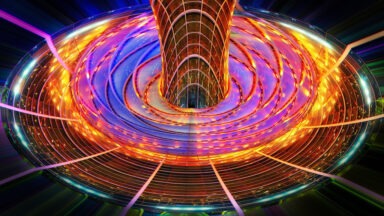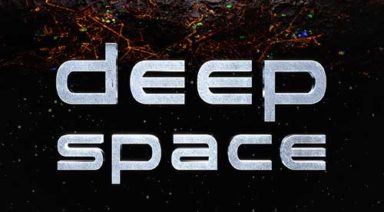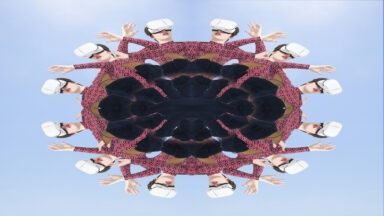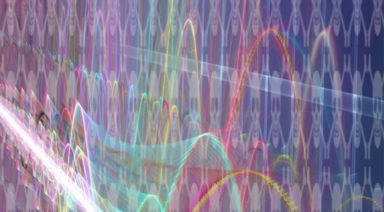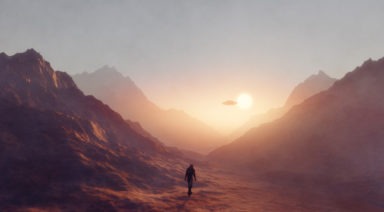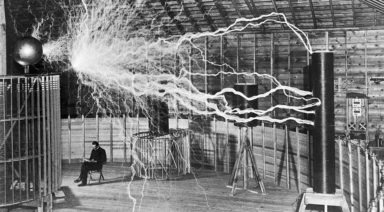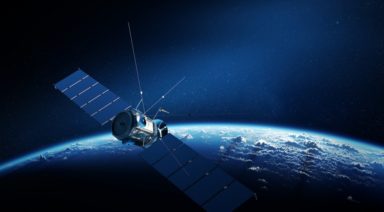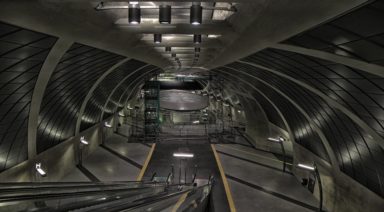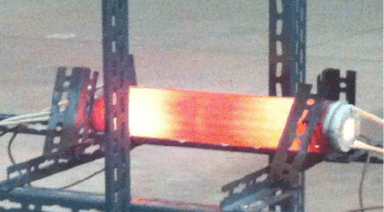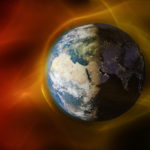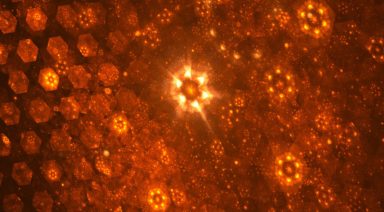Japan’s Space Elevator Expected to Be Built By 2050
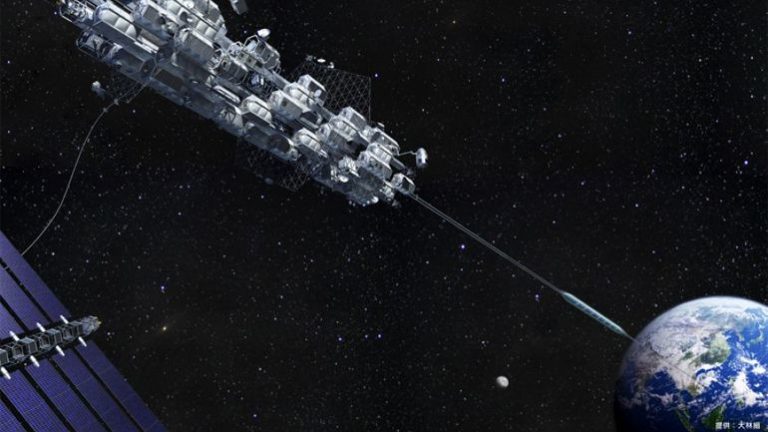
In 1979, famed science fiction author, Arthur C. Clarke, wrote a book titled The Fountains of Paradise, in which a future society builds an elevator to space from a tiny island on the equator. Now, Clarke’s vision may soon come to fruition when a Japanese company begins work on its own space elevator.
What is a Space Elevator?
A space elevator is hypothetical for now, but Japanese construction giant, Obayashi Corporation, believes the necessary technology to build one could be ready in the next 10 to 12 years. The biggest hurdle at this point is developing a material strong enough to build cables 60,000 miles long and capable of transporting 100-ton cargo.
The elevator would essentially consist of a space station tethered between an anchor and a counterweight in Earth’s orbit. Dangling down from the station would be a series of cables made of carbon nanotubes – a real material developed 20 years ago that is stronger than steel by a factor of nearly 10. The only problem is that we haven’t quite figured out how to scale the technology. At the moment, we’ve only been able to create a few-centimeter-long stretch of them.
Once those tubes are scaled, which Obayashi believes will happen by 2030, an anchor would be built on Earth somewhere along the equator that would attach to the space station and a counterweight further up. The station would reside in what’s called Clarke orbit, or geostationary orbit, named after the sci-fi author himself. In this scenario, an object remains in orbit over a single point on the equator, an obvious necessity for a space elevator to be feasible.
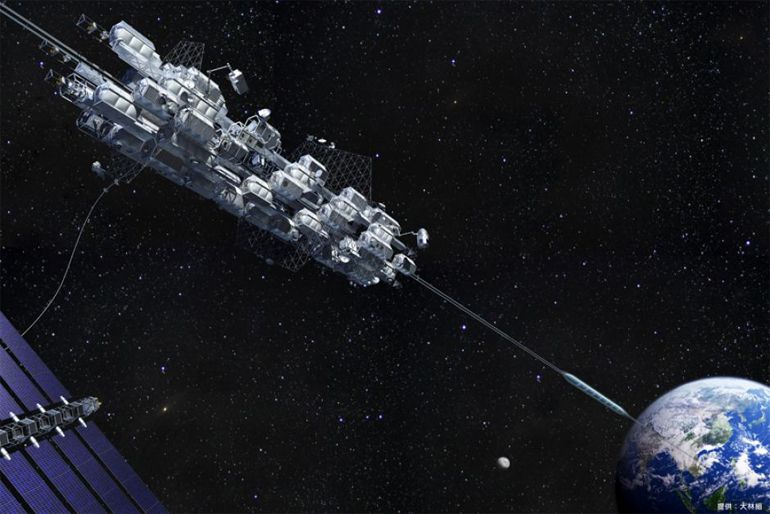
Obayashi’s concept
The elevator cabin itself would ascend at about 120 miles per hour and carry a maximum capacity of about 30 people. For propulsion, it might be powered by a laser shot up from Earth that would supply it with the energy needed to climb the cables.
The trip would take about a week and function as a platform for scientific research, a launch point for space travel, and a mode of space tourism. The elevator could cut the cost of transporting materials into orbit by a factor of 100, which could propel space programs and colonization efforts at an astounding rate.
One man who has devoted his life to studying the viability of space elevators is Michael Lane, and he’s raised over $100,000 on Kickstarter to work on models and prototypes. Laine wants to first build a space elevator on the moon, because a weaker material could be used for the cables, like Kevlar.
On the moon there’s little gravity and no ice or wind, presenting ideal conditions for an elevator. Also the setup would only require roughly the strength of a strong man to hold the system in place. Laine’s idea proposes that rare earth elements could be harvested and brought back to earth, creating a booming space mining operation.
Is the Space Elevator Possible?
The Obayashi Corporation believes it can have the space elevator functioning by 2050 if carbon nanotubes become scalable by 2030. The company says that it holds competitions among university students to encourage them to study and advance the technology. Although over the past several years, advancements in AI like ARES (Autonomous Research System), allow scientists to let robots conduct, analyze and test hundreds of experiments autonomously, adding to the chance that nanotubes will be scaled within Obayashi’s timeline.
Obayashi is a massive construction and development firm in Tokyo that is responsible for a number of large scale engineering feats across the world. One structure designed by the company, the TOKYO SKYTREE, is the largest free-standing tower in the world, at just over 2,000 feet.

According to the company’s plan, there will be a series of anchors to counterbalance the elevator. The space station that would serve as the final destination would be situated at about 22,000 miles above Earth. Further out would be the anchor at an altitude of about 60,000 miles. Before the primary station there would be additional hubs at altitudes where one could experience the level of gravity on the moon and on Mars, which would be ideal for conducting experiments for future missions.
Not everyone believes that a space elevator will be built as easily as Obayashi does. Elon Musk has scoffed at the idea, saying that until someone builds a structure made of carbon nanotubes longer than a footbridge, he won’t consider the possibility of a space elevator. Musk also says he believes that until we have a carbon nanotube trans-oceanic bridge, say between LA and Tokyo, we shouldn’t be talking about building space elevators.
A trans-oceanic bridge seems rather silly though, considering we have the ability to fly across oceans in a much more efficient manner. Why would anyone want to spend days driving from LA to Tokyo when they could fly? Even bullet trains aren’t fast enough for a transoceanic bridge to be meaningful.
But no major technological feat has ever occurred without its detractors and naysayers who claim these visions to be impossible or impractical. Maybe Musk is right and rockets or alternative jet propulsion will reign supreme over space elevators, but Obayashi plans on continuing its lofty aspiration, with others following suit. Will Arthur C. Clarke’s vision one day come to be realized?
Defense Agency Studying Anti-Gravity, Other 'Exotic Tech'
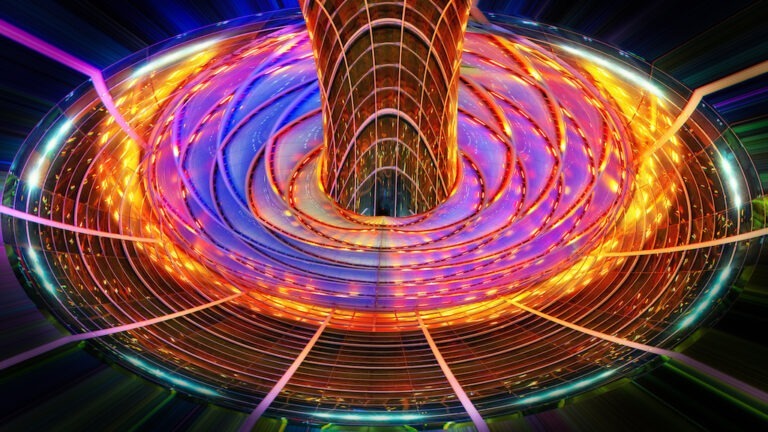
Wormholes, invisibility cloaks, and anti-gravity — it’s not science fiction, it’s just some of the exotic things the U.S. government has been researching.
A massive document dump by the Defense Intelligence Agency shows some of the wild research projects the United States government was, at least, funding through the Advanced Aerospace Threat Identification Program known as AATIP.
And another lesser-known entity called the Advanced Aerospace Weapons System Application Program or AAWSAP
The Defense Intelligence Agency has recently released a large number of documents to different news outlets and individuals who have filed Freedom of Information Act requests.
Of particular interest are some 1,600 pages released to Vice News, which spelled out, among other things, some of the, “exotic speculative technologies, including invisibility cloaks, traversable wormholes, stargates, negative energy, antigravity, high frequency gravitational wave communications, and an (obviously) never-carried out proposal to tunnel a hole through the moon using nuclear explosions.”
What can we learn from these newly released documents? Nick Pope worked for the UK’s Ministry of Defence on the UFO phenomenon and weighed in on the topic.
“Here’s what we know, some of the most extraordinary topics ever to have been discussed and considered by the United States government were looked at as part of this work, there’s no getting away from that,” Pope said.



